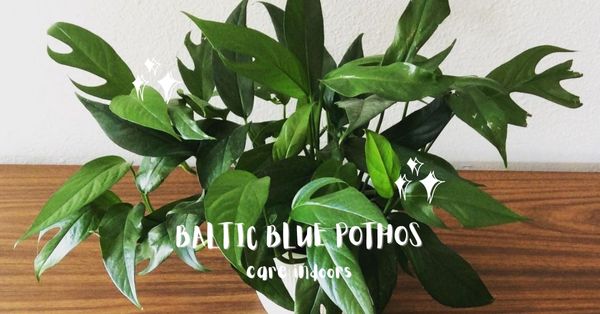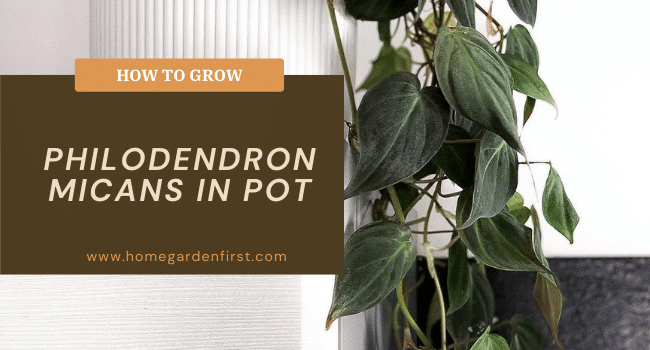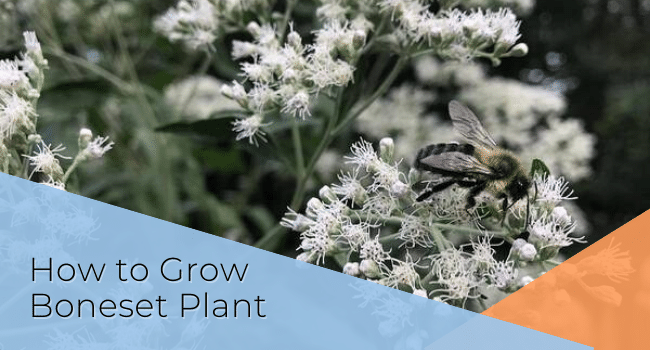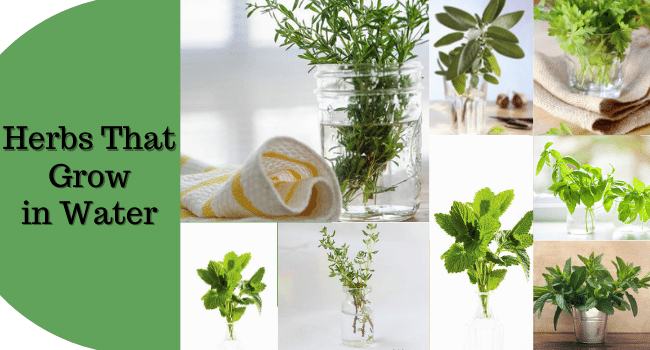How to Grow Banana in Container | Banana Tree Care in Pot
Learn all about growing Banana tree in container in a cinch! Enjoy the oasis of tropical feel in the hustle-bustle of city life by having a banana tree in the container.
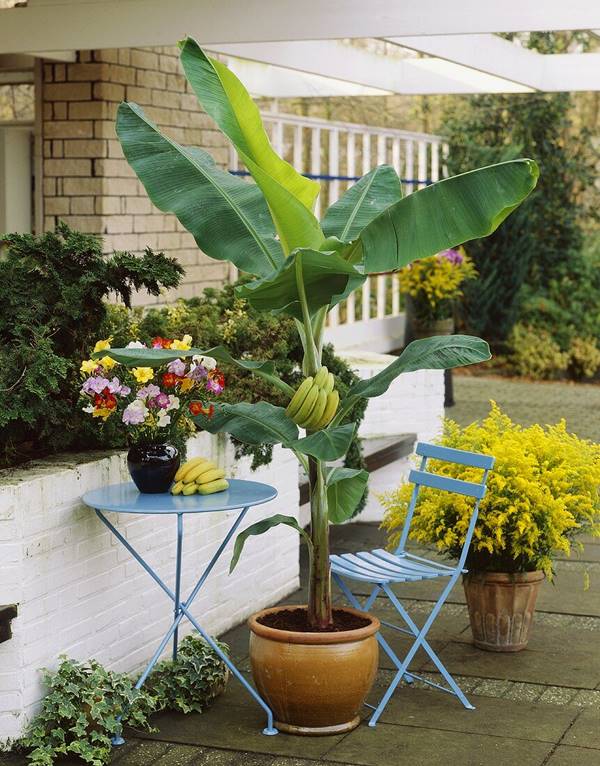
Botanical Name: Musa spp.
USDA Zones: 7-11
Growing a fruiting tree in a pot is always fun, and that includes our beloved bananas. It boasts large tropical leaves that add a tropical flair to indoor and outdoor spaces. Depending on your requirements, you can choose from both fruiting and ornamental banana trees. Contrary to popular belief growing banana tree in the pot is not difficult, especially if you take a few factors into account that we will discuss in this post. So without further ado, here is all you need to know about growing bananas in the container.
How to Grow Banana tree in Container
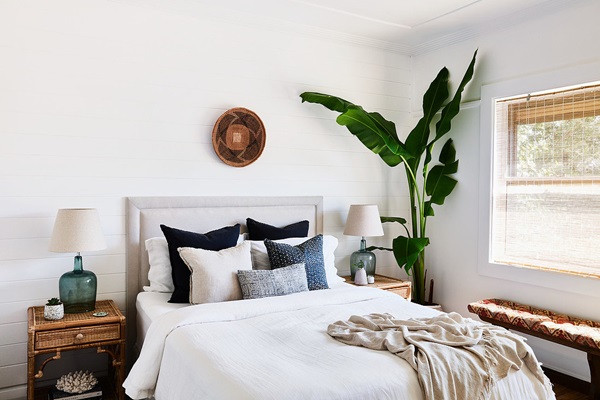
Choose a dwarf banana tree variety that best suits your needs, be it a fruiting or ornamental banana tree. In tropical and sub-tropical regions, you can keep the pot outdoors all year round, whereas you need to bring it indoors in temperature zones. Container care includes keeping the soil moist, fertilizing regularly, and adequate sunlight (6-8 hours). The container should be at least 15 gallons in size with drainage holes at the bottom.
Propagating Banana Tree
You can propagate banana trees from seeds or corm or buy the young banana tree from any garden center. When grown from seeds, it takes 3-5 years for the banana tree to fruit. Soak the seeds for 24-48 hours before planting to facilitate germination. Sow the seeds half to one-fourth inch deep in a good quality potting mix. Germination time will depend on the cultivar, after which you can transplant it to a larger pot.
To grow a banana tree from corm:
- Wash the corm under lukewarm water to eliminate any pests.
- Dig a hole around 3-4 inches deep and plant the corm in the hole.
- Keep the potting mix moist, and soon shoots will start to grow out from the corm.
Choosing the Variety
For growing banana trees in a container, choose a dwarf variety of banana trees that can easily be grown in a pot. Dwarf varieties of bananas grow anywhere from 4 to 12 feet tall, depending on the type you choose. Some best dwarf banana varieties include Dwarf Red, Gran Nain, Dwarf Brazilian, Dwarf Jamaican, Williams Hybrid, and Dwarf Lady Finger. Ensete ventricosum, Musa sikkimensis ‘Red Tiger’, or Musa ornata are some of the best cultivars for ornamental bananas.
Choosing the Container
The container size will depend on the variety you decide to grow. As a general rule of thumb, go for the pot that’s around 15 gallons or more in size to grow the dwarf banana tree. Make sure that the pot has drainage holes at the bottom. There is no need to worry about the material of the pot, but choosing plastic pots will make it easier to move the banana tree.
Repotting
Banana tree stops growing vertically when it becomes root bound, which requires repotting. Carefully take the tree from the pot, making sure not to damage the roots, and gently shake off the potting mix stuck to the roots. Fill a new container that’s 3-6 inches larger than the previous one with a well-draining potting mix and plant the banana tree in it. It takes around 2-3 years for the banana tree to outgrow the pot.
Location
Bananas trees belong to tropical and subtropical regions in their natural habitat and love sun and humidity. Ideally, it would be best to place them in a location where they receive 6-8 hours of direct sunlight. The afternoon sun can scorch the leaves in hot summers, so keep it in a shaded spot in the afternoon. Also, protect the banana tree from direct cold drafts of wind. Inadequate sunlight leads to poor quality fruits and leggy growth.
Soil
Soil that’s rich and organic matter and drains well works well for growing banana trees. You can amend the soil with organic matter and compost to increase nutrient availability and improve the texture of the soil. The soil should be slightly acidic, with a pH of 6 to 7.
Watering
It’s essential to keep the soil moist, so do not skip watering, especially during the summers. Water regularly and even twice a day in scorching heat when the soil dries out quickly. Allow the excess water to drain out entirely from the bottom when you water thoroughly. Cut back watering in winters!
How to Grow Banana in Container Indoors
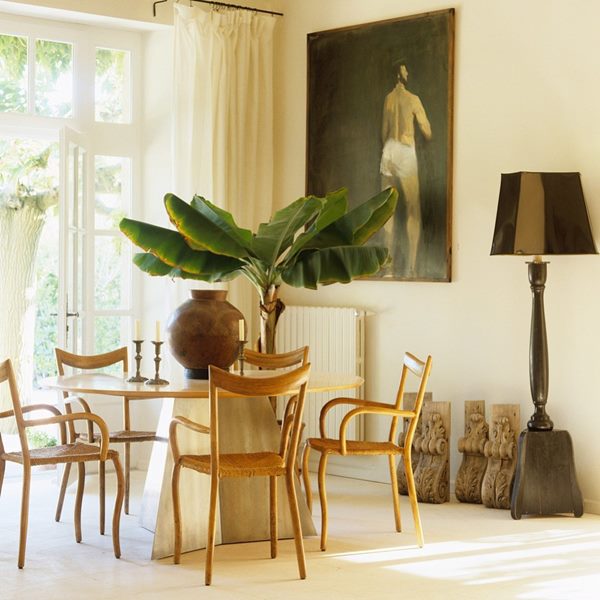
Growing banana trees indoors is a good option for those who lack space or want to protect the plant come winters. Place the pot near a well-lit south-facing window or balcony where it receives ample bright light. Reduce watering and fertilizing in winters but do not let the soil become completely dry. You can move back the tree outdoors come springs when all danger of frost has passed.
Temperature and Humidity
The ideal temperature range to grow bananas lies between 75 to 90 degrees F. Banana trees can tolerate temperatures as low as 60 degrees F; below that, it’ll start to show signs of distress, so move the pot indoors for anything below that. Anything above 50 percent humidity will do if humidity levels fall below that mist around the plant to raise humidity. Placing a pebble tray filled with water at the base of the plant can also help.
Banana Tree Care
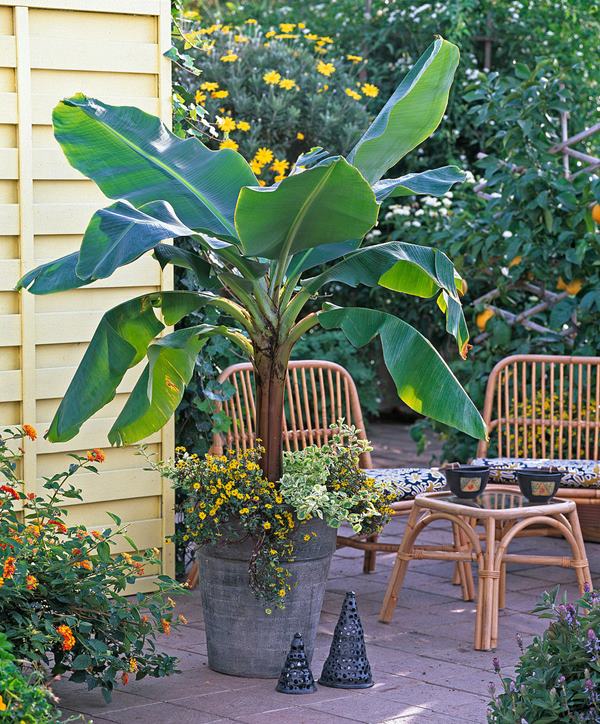
Overwintering
Overwintering is needed in zones where the temperature falls below 50 degrees F. Bring the pot indoors and place it at a warm spot come winter. Cut back the leaves and reduce watering when you overwinter the banana tree. Come springs, move the pot outdoors, or to a well-lit location indoors.
Pruning
Start by cutting the leaves that appear wilted, brown, and dry to redirect energy towards healthy growth. When pruning stems of mature banana trees, make sure you have harvested fruits or wait till the plant is finished flowering. Also, cut back the suckers that grow out near the base of the banana tree.
Fertilizer
When the plant is young, go for a nitrogen-rich fertilizer to boost growth. Later you can choose a well-balanced or 8-10-8 fertilizer once or twice a month to promote growth. You can use both granular and liquid fertilizer for the banana tree; whatever you choose, make sure to cut back in winters.
Pests and Diseases
Garden pests such as aphids, mites, scales, and banana weevil can damage the foliage. Handpick these pests or spray neem oil solution over the leaves to get rid of these pests. Although bananas like the soil to remain moist, overwatering will lead to waterlogged soil and invite the onset of problems, including root rot.
